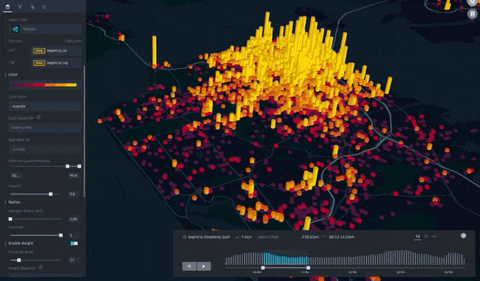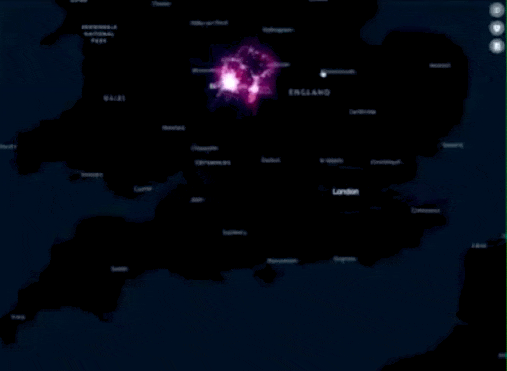This is a Case study research which demonstrate GIS application + Affinity analysis, actually improved sales performance for FMCG Retail brand: P&G
Disclaimer: It's only my guesstimation
P&G is another FMCG brand that has been using GIS to optimize their distribution strategies. In 2017, P&G Canada implemented a GIS-based solution that enabled them to monitor their inventory levels in real-time and optimize their distribution network. The solution used data on store locations, product demand, and delivery routes to help P&G identify the most efficient routes for transportation and distribution. By optimizing their distribution network, P&G was able to reduce transportation costs and improve their delivery times.

Deep Dive analysis
P&G's case involved the use of Affinity metrics to analyze data and optimize the placement of their products in retail stores. The underlying issue was that P&G was not maximizing their sales potential due to poor product placement in stores.
To address this issue, P&G used a combination of GIS technology and Affinity analysis to analyze data on product sales and customer demographics. By integrating this data with geographic information such as store locations and foot traffic patterns, P&G was able to create maps that showed where their products were selling well and where they were not.
Based on this analysis, P&G was able to optimize the placement of their products in stores, ensuring that their products were in high-traffic areas and that they were being marketed to the right demographic groups. P&G also used this analysis to identify stores that were underperforming and to develop targeted marketing campaigns to improve sales in these stores.
One example of how P&G used GIS technology and Affinity analysis was in their partnership with Walmart. P&G analyzed Walmart's store layouts and identified areas where their products were not being effectively placed. By adjusting the placement of their products in these stores, P&G was able to increase sales and improve their overall market share.
The resolution of the issue was that P&G was able to improve their sales performance by optimizing the placement of their products in retail stores. By using GIS technology and Affinity analysis to analyze data and identify areas with high sales potential, P&G was able to increase their market share and better target their marketing efforts.
The success of P&G's approach can be attributed to several factors. First, GIS technology allowed P&G to analyze large amounts of data and create visual representations of this data, which made it easier for them to identify areas with high sales potential. Second, P&G's focus on optimizing the placement of their products in stores based on Affinity analysis, allowed them to better target their marketing efforts and increase sales. Finally, P&G's partnership with Walmart allowed them to leverage their data analysis to improve their product placement in one of their largest retail partners, which had a significant impact on their overall sales performance.
In summary, P&G's use of GIS technology to analyze data and optimize product placement in retail stores was highly effective in improving their sales performance. By using GIS technology to identify areas with high sales potential and better target their marketing efforts, and based on Affinity analysis to learn the relationships between products being purchased in the same basket, P&G was able to increase their market share and improve their overall sales performance.

How did P&G perform the analysis?
To perform the analysis, P&G used GIS technology to create maps that showed where their products were selling well and where they were not. They also used this technology to identify areas with high sales potential and to develop targeted marketing campaigns to improve sales in underperforming stores.
For example, P&G partnered with Walmart and analyzed their store layouts to identify areas where their products were not being effectively placed. They used this data to adjust the placement of their products in these stores and improve their overall market share.
In addition to analyzing store layouts, P&G also used GIS technology to analyze data on customer demographics, such as age, income, and buying habits. They used this information to better target their marketing efforts and ensure that their products were being marketed to the right demographic groups.
Overall, P&G's use of GIS technology allowed them to analyze large amounts of data and create visual representations of this data, which made it easier for them to identify areas with high sales potential and better target their marketing efforts.

10 questions that can be raised about P&G's case for further discussion:
How accurate and reliable is the data used in the analysis? Are there any limitations or biases in the data that might affect the validity of the conclusions drawn?
How scalable is the approach? Can it be replicated across different markets and regions?
What are the costs associated with implementing the GIS technology and data analysis approach, and is the investment worth it?
To what extent did P&G's competitors also use GIS technology and data analysis to optimize their sales performance? How much of P&G's success can be attributed to the technology itself, and how much is due to other factors such as product quality and branding?
How well did P&G take into account the cultural and social differences between different regions and customer demographics when developing their marketing campaigns?
Did P&G face any ethical or privacy concerns when collecting and analyzing customer data?
How much did P&G rely on human judgment and intuition in interpreting the data, and to what extent was the decision-making process automated?
Did P&G's use of GIS technology and data analysis lead to any unintended consequences or negative impacts on local communities or the environment?
How did P&G measure the success of their marketing campaigns, and what metrics did they use to determine the impact on sales performance?
To what extent did P&G's approach to sales optimization align with its broader corporate social responsibility goals, such as sustainability and ethical business practices?
These questions are not meant to detract from the success of P&G's approach, but rather to encourage critical thinking and consideration of potential challenges and limitations.

My personal guesstimation in approaching these questions with a focus on understanding the broader implications and underlying principles that led to P&G's success. Here are my answers to the ten critical questions raised:
To ensure the accuracy and reliability of the data, P&G likely employed a range of methods, such as data cleansing, validation, and normalization, to reduce errors and inconsistencies. Additionally, P&G likely used multiple data sources to cross-validate and confirm their findings. However, there may still be limitations and biases in the data that require further exploration and analysis.
The approach used by P&G is likely scalable across different markets and regions, but it may require customization and adaptation to local conditions and customer behavior. P&G may need to conduct further research to ensure the approach works effectively in new markets.
The costs associated with implementing the GIS technology and data analysis approach may vary depending on the scale and complexity of the project. P&G likely weighed the costs against the expected benefits, including improved sales performance, better customer targeting, and increased market share, to determine the investment's worth.
P&G's competitors likely also use GIS technology and data analysis to optimize their sales performance, but P&G's approach may have been more effective due to their rigorous analysis and insights into customer behavior and preferences. The success of P&G's approach likely relied on a combination of factors, including product quality, branding, and marketing campaigns.
To effectively target different customer demographics, P&G likely conducted research on cultural and social differences and tailored their marketing campaigns to fit the local context. P&G may have also collaborated with local partners and stakeholders to ensure their approach aligns with local values and expectations.
P&G may have faced ethical and privacy concerns when collecting and analyzing customer data. To address these concerns, P&G likely ensured they complied with applicable laws and regulations and implemented strict data privacy and security measures.
P&G likely used a combination of human judgment and intuition and automated decision-making processes to interpret the data. P&G may have also conducted extensive testing and validation to ensure the accuracy and validity of the findings.
P&G may have considered the potential unintended consequences and negative impacts of their approach on local communities and the environment. To mitigate these impacts, P&G may have implemented measures to reduce waste and minimize the use of resources.
P&G likely measured the success of their marketing campaigns using a range of metrics, such as sales growth, customer retention, and brand awareness. P&G may have also conducted customer surveys and feedback to evaluate the impact of their campaigns on customer satisfaction and loyalty.
P&G's approach to sales optimization likely aligned with its broader corporate social responsibility goals by promoting sustainable and ethical business practices. P&G may have implemented measures to reduce waste and improve supply chain transparency to ensure their approach aligns with these goals.
In summary, P&G's success can be attributed to a combination of factors, including the effective use of GIS technology and data analysis, rigorous research and testing, and a focus on customer behavior and preferences. P&G's approach provides a valuable lesson for FMCG brands on the importance of leveraging technology and data to optimize sales performance while also prioritizing ethical and sustainable business practices.
The key takeaways from P&G's case are:
Use of GIS technology to analyze data can help optimize product placement in retail stores, identify areas with high sales potential, and develop targeted marketing campaigns.
Combined with Affinity analysis, the insights gained more depth because those datasets validate each other and becomes multidimensional
Analyzing store layouts can help identify areas where products are not effectively placed, leading to adjustments that can improve sales.
Analyzing customer demographics can help target marketing efforts to the right demographic groups.
Effective use of data and technology can lead to improved sales performance and market share.
Overall, the key takeaway from P&G's case is that the effective use of GIS technology and data analysis can provide insights into customer behavior and preferences, which can be used to optimize product placement, marketing efforts, and improve sales performance.
Comments